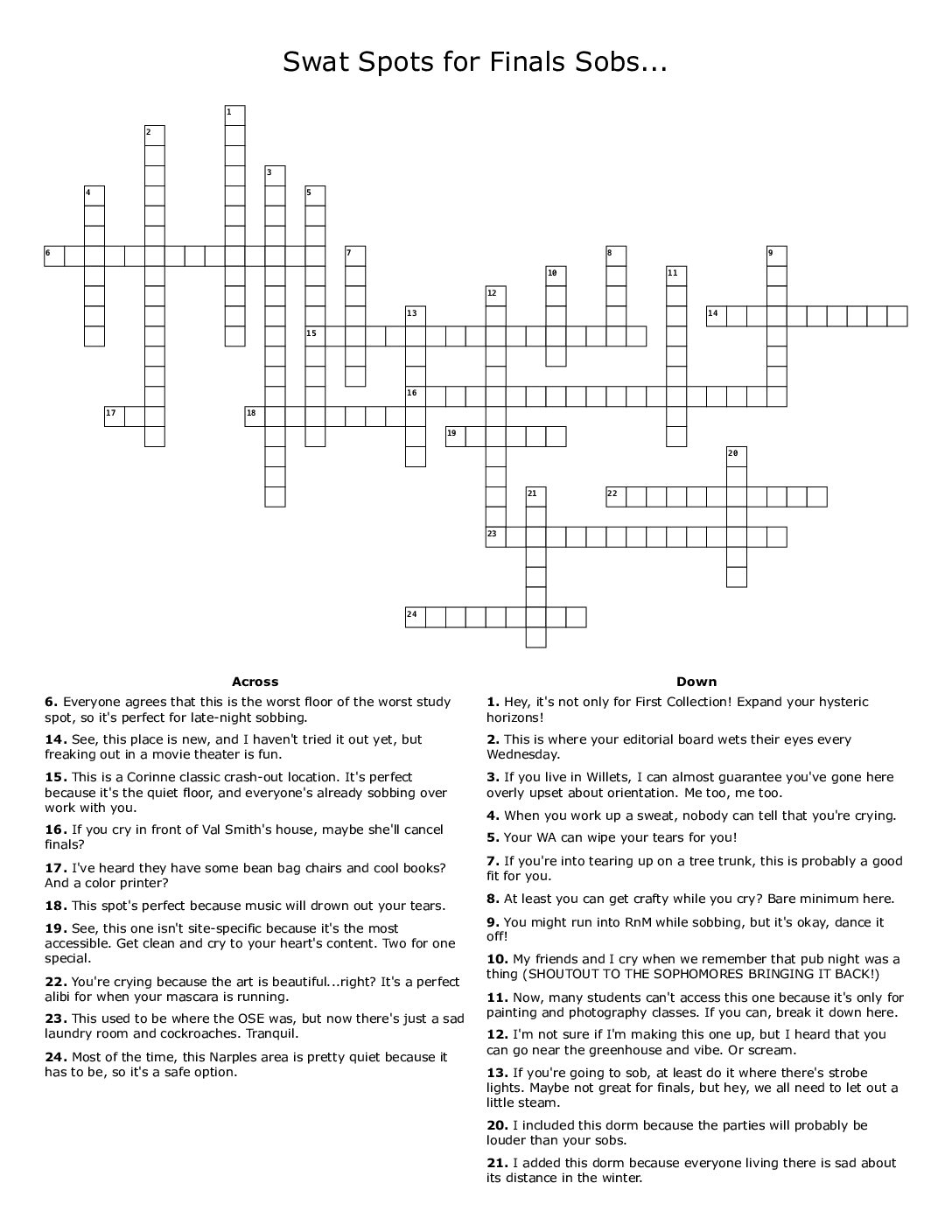As a Swattie, I think it’s pretty much understood that while students enjoy exciting events on campus. Getting people to attend the event, however, is a challenge in itself. Between the impossible hours of readings and problem sets, campus jobs, and extracurriculars, we rarely have the opportunity to put down our homework, let alone convince ourselves to attend yet another commitment. This makes sense; why would we go to a lecture or study break for an hour when we could devote that time to sleep instead?
While this is accepted as normal, always attending to our own individual needs takes away from our sense of community. It forces us to think too much about ourselves instead of getting to know, or at least appreciate, the other amazing individuals who contribute to Swat. Add our divided opinions about issues like affirmative action, our differences in income or race, and even our diverse interests in academics, and we run the risk of modeling factions rather than a collective whole.
This is an issue at Swat that’s often easy to ignore. Everyone assumes that since we are a college of only about 1600 students, with only one dining hall, and all students collectively drowning in assignments, we must be a tight knit community. However, I think the events of the last few weeks, such as the feelings of the low-income population after the need-based admissions article in the DG and the Jewish members of our community in the aftermath of a series of Swastika-related incidents, have served as examples of how we must make more of an effort to come together in appreciating differences and understanding them, rather than denouncing them.
The college has taken actions to reinstate a sense of community, through collections every Friday and more vigils after tragic events. With the relatively low student turnout, however, we can’t help but ask ourselves: is it even possible to foster a more collective campus? If students are too consumed with academics and don’t have the time to devote to creating an intimate campus culture, what’s the point of trying?
After watching the presidential debate on Monday with hundreds of other Swatties in the Lang Performing Arts Center, I can say that Swarthmore has more of a community than I think many of us have ever known; we must continue to find ways to bring this community together more often. Never in my time at Swarthmore had I felt so connected with everyone, and so proud to be surrounded by a group of people who were so engrossed in the same issues, coming together to engage in the same important cause. In the United States, we are currently experiencing an epidemic of some of the lowest political participation rates in history. Yet on Monday night, I witnessed more civically engaged Swatties voluntarily in one room than I had ever seen. Everyone was glued to the screen, actively listening to each candidate, watching their every move, and waiting to see how they would respond to the issues. Everyone was well aware of the fact that we will all be affected by the issues discussed in the debate, and thus all have a role in the situation and some level of responsibility for the outcome.
But it wasn’t just the fact that everyone was watching and practicing an aspect of participatory democracy that gave me hope for our community. We were all laughing, commenting, and simply appreciating one another’s presence. Each person in the room contributed to a sense of energy and excitement (even a sense of disgust at times), which made the debate that much more interesting and enjoyable. I felt as if I were part of a bigger cause, one that is ambitious, driven, and inspirational; I felt that I was where I was supposed to be.
Of course, this is far from where we need to be in establishing a stronger Swarthmore. Campus Republicans would have felt completely ostracized at the debate, and even outside of political events, conservative students are constantly disparaged for sharing their views. Moreover, this event failed to demonstrate diversity of thought, instead depicting the power of group polarization rather than the excitement we all ought to have felt in being around one another. But it was a symbol of hope. The debate watch party demonstrated that we have the power to create a much more positive energy on campus if we just have a stronger foundation. It showed that Swarthmore is a body of students who care—we just need to find more effective ways of coming together to remind one another of this more often.
Swarthmore is nowhere near as strong of a community as it has the potential to be, but it is a group of amazing, passionate people who want to make a difference. We need to invest more time and resources into bringing everyone together into a family of supportive changemakers.















